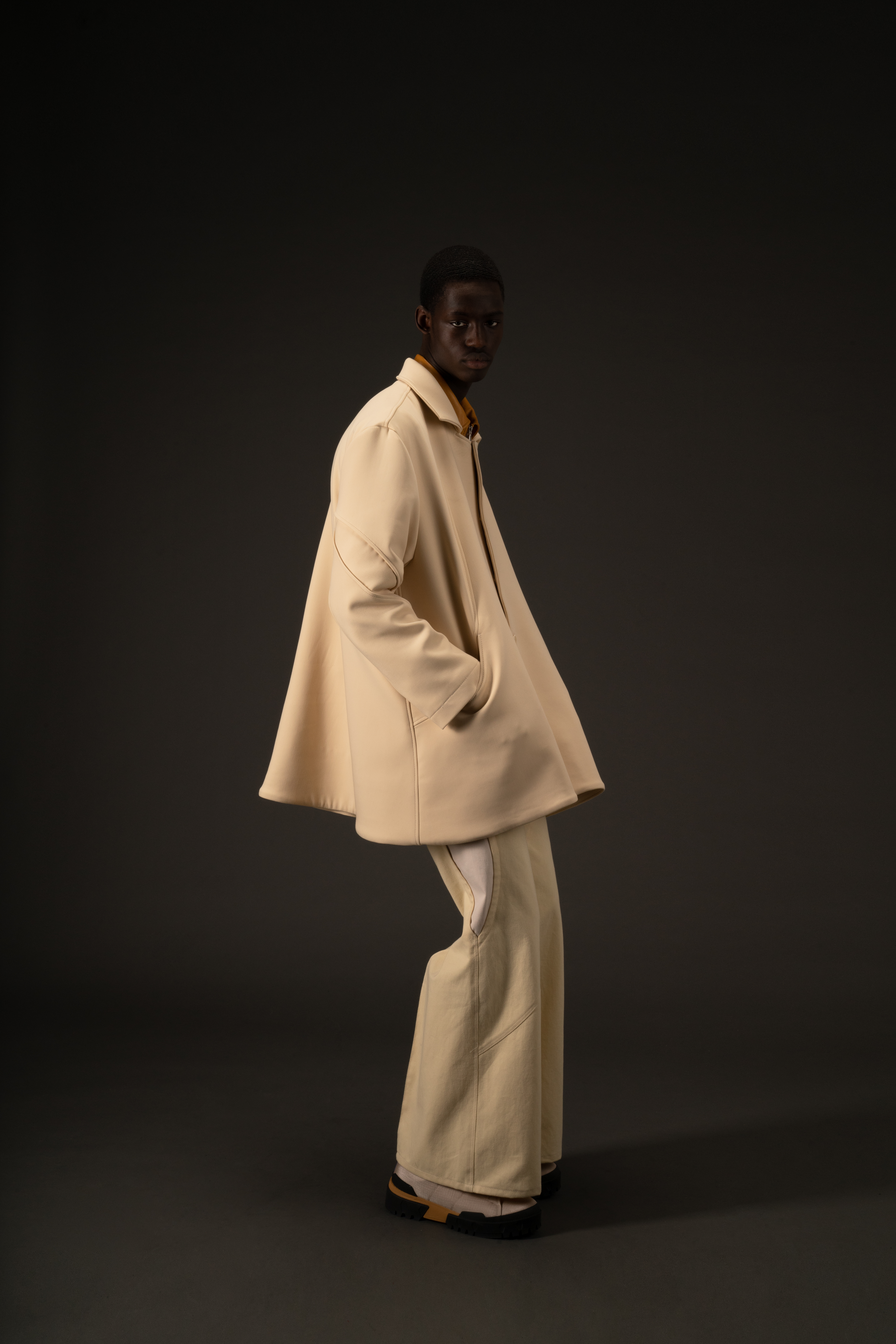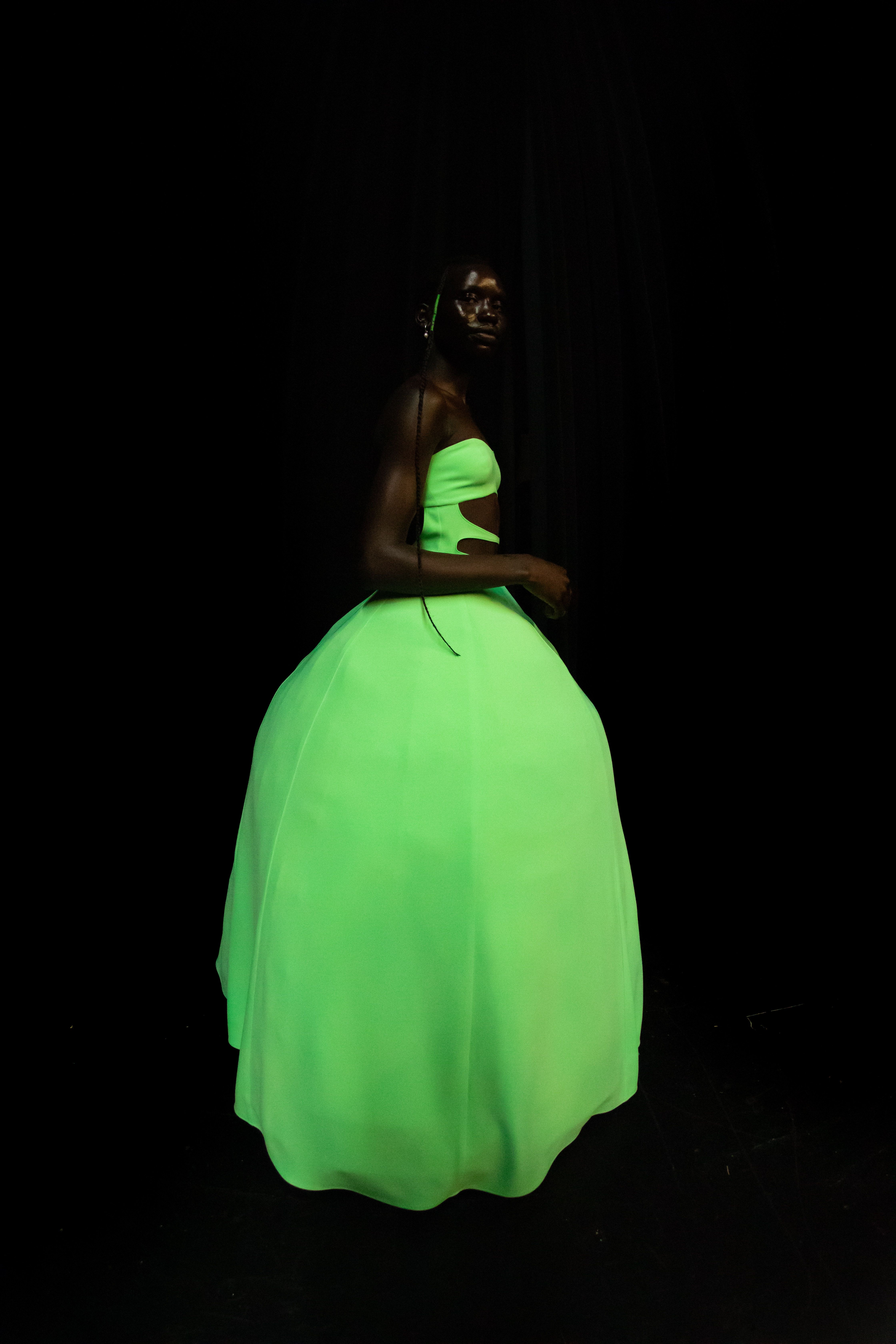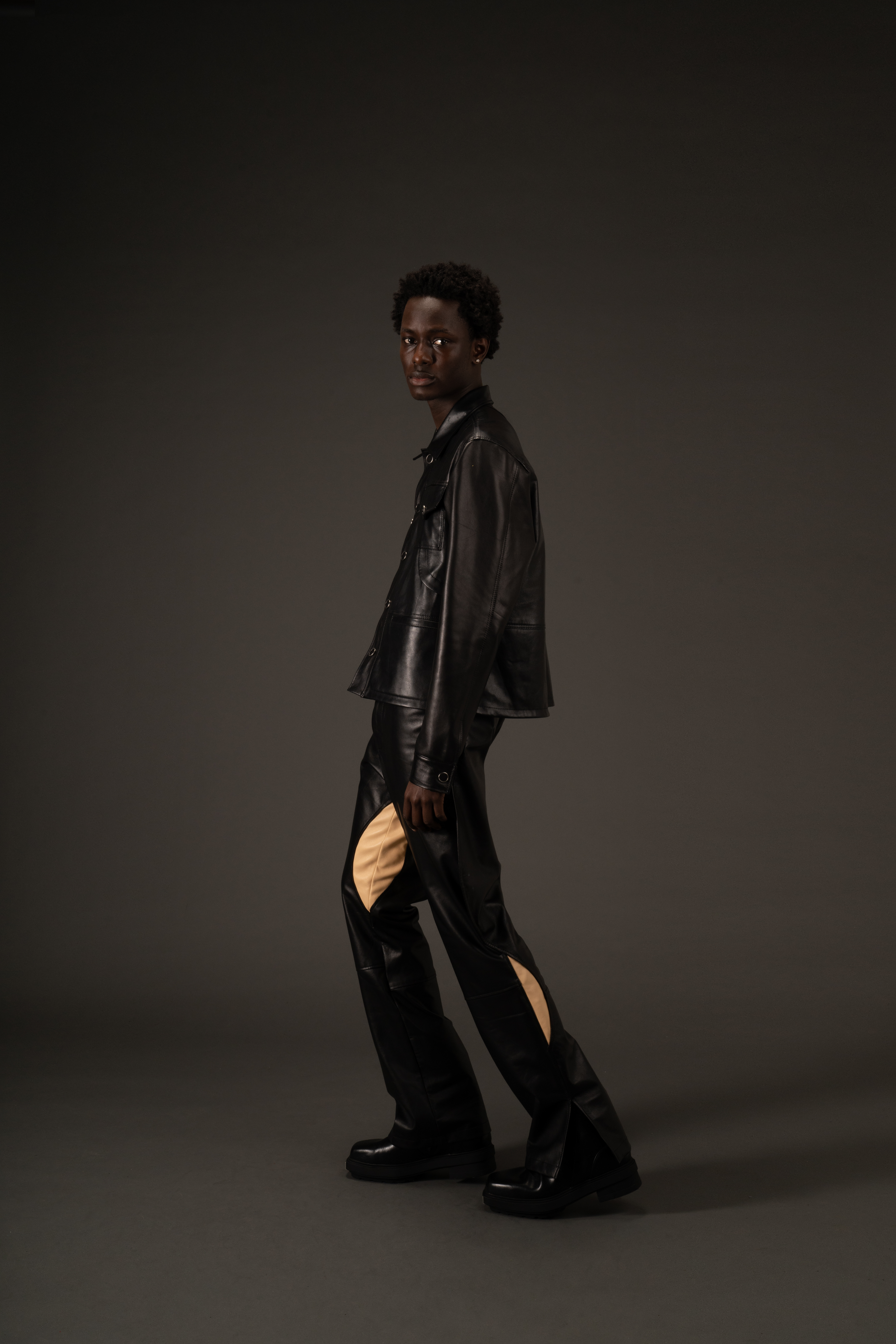How has conquering your own sense of peace and happiness contributed to your passion? In what ways were you able to remove the need for monetary gains in order to see your passion align?
My mental wellbeing has actually helped me understand what I want to do with the brand and how to view the brand. When I started brand in senior high school, I had an idea of what fashion is – creating a fashion show, getting looks on the right carpet…Then I started doing these things and more, such as following the calendar, until I realized the effect it had on me emotionally, mentally.
I was affecting my personal relationships with people who were close to me. In 2019, I took a step back from the brand, and came back in early 2020, just a few months before Covid. I started prioritizing my own pace in how I moved and dictated my brand. If I wake up today, I feel like it is incomplete then I should not force it.
My pace is the Frank Ocean pace, as I would call it. He pops up every now and then. When the work is ready, it is ready. That is the approach for the brand now. I do one main collection in one season and in the next season I focus on a different presentation such as a showcase or an exhibition.”
How are you intertwining fashion with music, narrative stories, artistic movement to influence your brand values and identities?
When I look at my work in the biggest scope I love design in general. I am always finding this marriage in design. For example, for the last collection I did last September, my friend and I worked on some designs together centered around the Festival of African Culture in Lagos, Nigeria. It was one of the biggest Black festivals to ever take place in history.
I wanted to do a collection where I imagined what the festival would look like if it happened in 2022. I look at the people who perform at the festival such as Sun Ra, Miriam Makeba, even Stevie Wonder. There is this intersection between the music and language of 1977.
And then you think about all the designs like architecture for initiatives we do. We are currently working on a community center in Austin; and in New York as well as initiatives to support schools and communities back home in Nigeria.Architecture, fashion, and design are mediums that have come together and given birth to my brand, Head of State.
How intentional were you when naming your brand Head of State as it is derived from “Coffin for “Head of State”” by Nigerian multi-instrumentalist Fela Kuti, who was a political activist? Please elaborate on the inspiration.
My friend and I were in the parking lot at Target, and we are trying to figure out a name for the brand. We tossed in different names, like Apple, Tesla. I stepped out of the car and once I stepped back in with my phone connected to the aux, the first song that played was Coffin for Head of State. And right away, we both looked at each other, and this is one of my favorite moments.
The emotion I feel for this song is what I want everyone to feel when they come across the brand or even see one of the fashion shows. It is very empowering and lifts you emotionally while you still get this indirect education from it. I felt the emotion of the joy I felt from dancing, I also felt this emotion of purpose. The song made me think about my intentions and my purpose.
Fela Kuti was very intentional with Coffin for Head of State. I It is one of the most political songs I have ever come across. Not every artist experiences the same world but some artists are looking to educate the people of their experiences. While you are dancing to that song, people are also gaining political knowledge about what is happening across the world in relation to their own challenges.
The song captured the joy and understanding of what purpose really means. Fela made that song after the Nigerian government came into his house and killed his mom. He wrote that song after he carried his mom’s coffin from his house through the front door of the Nigerian government. There was so much intention in that song that it made me realize what my intention and purposes are overall.
What is it about your father’s design work that has influenced your work ethics, design aesthetic, and your drive to advocate for your community? How has your father’s interaction with his community influenced Head of State?
When my dad traveled to Europe from Nigeria for the chance of a better life for the family, he went to the desert, and one of the ways he was able to survive that trip was through his clothes. He turned his shirt and jacket into something that could serve him. He deconstructed the fashion items by adding cuts out to stash food. He added piping around the jacket with the straw coming out where he could save water and sip it over time. And the little money he had for that trip, he was able to put it in the sole of his shoes for whenever he needed it. The way my dad saw clothes was a combination of empowering people around him and making clothes functional to be helpful tactics during a mode of survival. When I moved to America I saw a completely different type of fashion, centered around commercial aspects. And I am not saying that there were no thoughts behind it. But what I learned from my past specifically is how I can design to be intentional and meaningful. I want my brand to have a balance between the commercial requirements in America and what I have learned from my dad in Nigeria.
Do you believe your “like father, like son” relationship contributes to the reconstruction of Black masculinity?
Through fashion, I actually saw my dad cry for the very first time. My dad came to America in 2004 and I came here in 2010. So I spent six years of my life seeing my dad once a year when he visited us back in Nigeria. I spent more time with my mom, so I grew up with this idea of what a father is, I did not know exactly what it meant.
In Nigeria, even here in America, there is a hyper-masculine environment where men are not supposed to cry and therapy is not a thing. But through discovering what I want to do as a designer, I started learning about my personal narrative. And I got to see my dad on a consistent basis and I want to learn more about his story. How did you survive from Nigeria to Libya? How did he start a trip out to 70 people and only ten people made it out of life?
Through that process and his narratives I was feeding not just my work but my mind too. I did not know I was getting therapy. I did not know he was also getting therapy through that process. That was the first time I saw my dad cry and I actually realized that many barriers can be broken. Through fashion and design I was able to heal my inner self and see my relationships differently. I thought, ‘How can I be a brother to my sister and my brother? How can I be a good friend to my friends? How can I be a good human being to the world?’
Then vs Now is a series that reminds of how far we have come from our very beginnings to appreciate our present. The stories highlight each of the 2022 CFDA/Vogue Fashion Fund Finalists’ beginnings in design. The designers speak to how they have developed and conceptualized their purposes in fashion.









